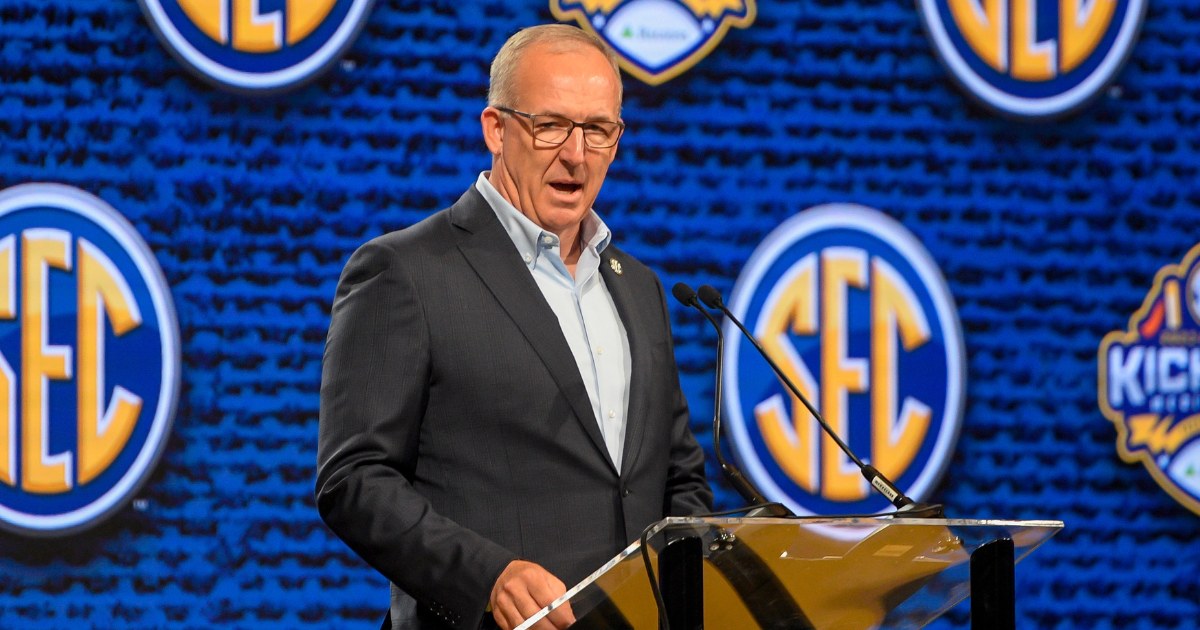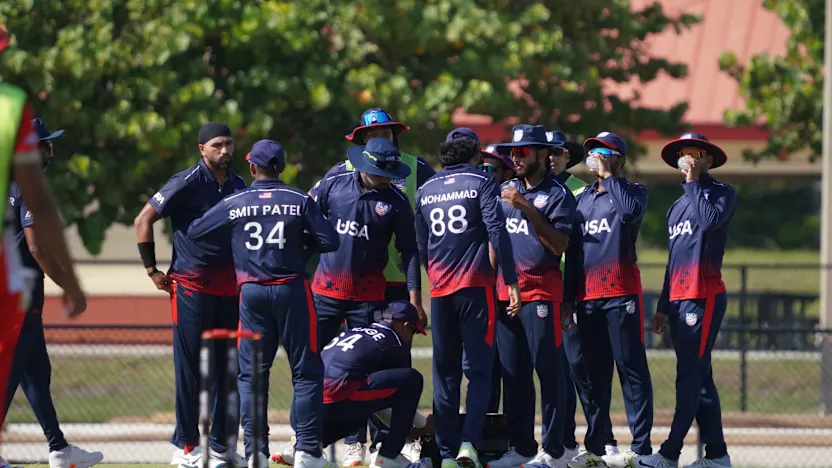SEC's Greg Sankey is making other leagues an offer they probably can't refuse

MIRAMAR BEACH, Fla. — Greg Sankey heard the magic phrase, and suddenly the gloves came off.“You’re in the position of thinking about the greater good of college football,” Ralph Russo of The Athletic said to the SEC commissioner during a press conference Monday ahead of the league’s spring meetings. “That was talked about a lot from other commissioners last week when there was a decision on seeding. How do you balance what is best for the SEC if maybe giving up a little for the SEC would be better for the whole?”Sankey had just spent much of the previous 30 minutes discussing the need to decide on a College Football Playoff format that will begin in 2026 because there is none at the moment. The references to “greater good” and “other commissioners last week” struck a nerve.“Look at the track record,” Sankey said. “We didn’t need [a 12-team playoff]. If we’d stayed at four, we would have had half the four last year. “I don’t need lectures from others about good of the game. I don’t lecture others about good of the game.”Sankey then mentioned “coordinating press releases,” which weren’t actually public releases but messaging from certain commissioners to certain reporters — I didn’t get any of this messaging, so I’m not violating any confidence here — following the unanimous vote to move to a straight-seeding model for the 2025 CFP.“You can issue your press statement,” Sankey said, “but I’m actually looking for ideas to move us forward.”And there is the impasse.Sankey wants ideas, but the part he doesn’t say out loud is that they have to be ideas acceptable to the Big Ten and the SEC, which now wield power so large that the ACC and Big 12 don’t really deserve to be called “power conferences” anymore.Though Sankey will not endorse any model publicly, the Big Ten and SEC favor models that grant those leagues four spots each in a 16-team field. The ACC and the Big 12 would be guaranteed two spots each. The other six conferences would get one spot and a chance to fight everyone else for three at-large bids.The ACC and Big 12 want three spots each or they’d prefer that no conference get guaranteed bids beyond league champions.When the field was smaller, Sankey favored all at-larges. That has shifted, particularly after three 9-3 SEC teams narrowly missed the field for the first 12-team CFP in 2024.Earlier this year, Nebraska handed Sankey the tool he’ll probably use to get those four guaranteed bids for his league when it canceled a home-and-home series with Tennessee for 2026 and 2027. At the time, Cornhuskers coach Matt Rhule said that given the current CFP seeding rules, it didn’t help Nebraska to play challenging out of conference games.Sankey agrees with Rhule, by the way. Sankey believes that the current model of choosing which teams make the playoff benefits the teams that schedule the easiest games. And Sankey will use that series cancellation to paint a picture that if something doesn’t change, everyone will drop their marquee non-conference games.What will he argue? That it isn’t good for the game. Because it isn’t. To save those games and keep programs scheduling them, Sankey will say and has said, the fear of being left out of the CFP for losing them has to be eliminated. Hence the automatic bids.Codifying that the Big Ten and SEC are twice what the ACC and Big 12 are isn’t good for the game either if your idea of a healthy college football landscape is one with a broad spectrum of teams spanning the nation. But to put it more bluntly, it’s really bad for the ACC and Big 12, and that’s why the ACC and Big 12 are pushing back.Hence the impasse.Sankey also intends to weaponize other leagues’ desire for the SEC to play nine conference games instead of eight. This has always been held up as a fairness argument with SEC haters denouncing the league for taking the east way out. In reality, Sankey has been trying to push his schools toward a nine-game conference schedule for years. The reasons are financial, not altruistic. But Sankey actually does agree with the Michigan and Ohio State and Oklahoma State fans complaining on their message boards about the SEC playing only eight conference games.He’d like to see the SEC play nine conference games as well. His reason is different, but his desire is the same.And he’s going to offer to trade that. Give the SEC those four automatic bids, and his schools will play nine conference games. And they’ll continue to schedule to schedule tough out-of-conference opponents.And won’t that be good for the game?See how this is going to work?Sankey also is going to point out that the SEC might actually be giving up spots over an all at-large system. The league would have gotten six teams into the field last season with 16 at-large spots. It would have gotten five under the proposed model.It’s difficult to compare previous years because conference alignments are different, but if we just move everyone to their current conferences, the SEC would have gotten seven schools into a 16-team, all at-large field in 2023. It would have been helped in 2022, when it only would have had three in the field. Then the numbers shift again. It would have been four in 2021, five in 2020, six in 2019. You see where this is going.In other words, Sankey probably is going to wind up getting what he and his league want because he’s going to ask something like this of his fellow commissioners:Would you rather have the SEC teams playing eight game conference schedules, getting five or six teams into the CFP and not scheduling more hard non-conference games? Or would you rather have the SEC teams playing nine conference games, getting four teams into the CFP and scheduling the tastiest non-conference games?His goal seems to be to leave them a choice that isn’t really a choice.“Ultimately, I recognize I’m the one who ends up typically in front of the podium explaining not just myself but ourselves,” Sankey said.He meant this as a shot at other commissioners hiding behind him when CFP decisions get made. But in this case, when the format for 2026 and beyond is finally unveiled, it probably will be Sankey on the podium announcing a decision that the SEC and Big Ten gave the others no option but to accept.















